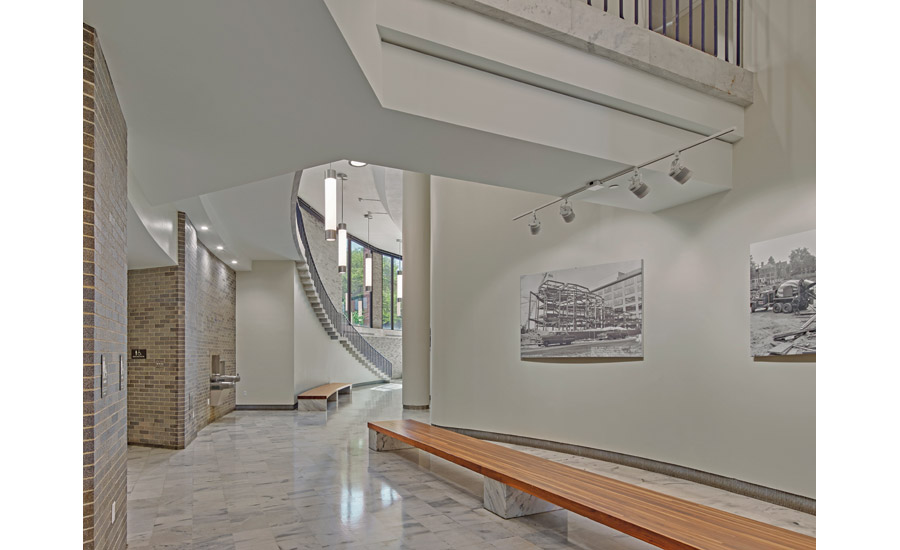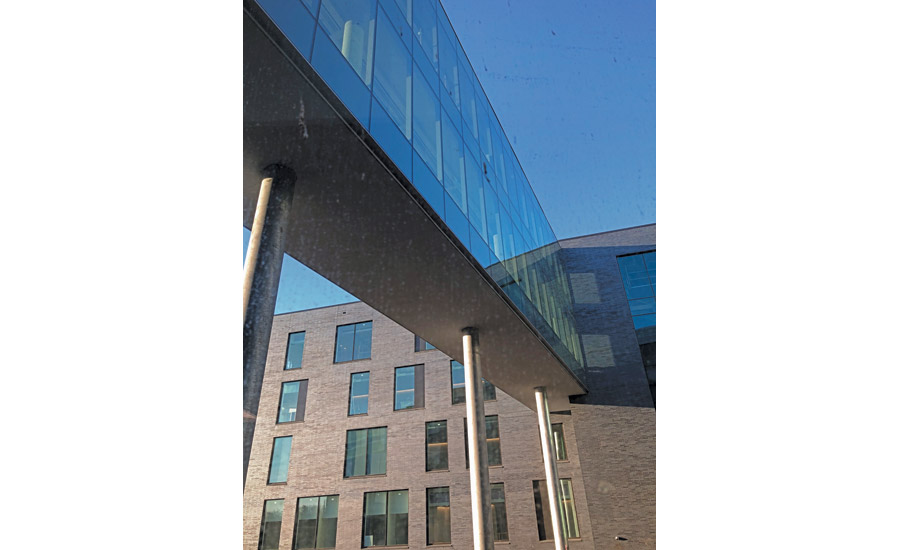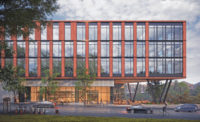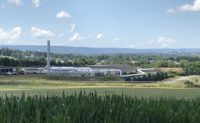Transportation and power work as well as distribution and warehouse projects were among the sectors supporting the region’s design firms during the pandemic, according to executives from firms ranked on this year’s ENR MidAtlantic Top Design Firm rankings.
The top 10 design firms reported a combined $2.38 billion in 2020 revenue, a 0.83% increase from the $2.4 billion performed by last year’s top 10 in Delaware, the District of Columbia, Maryland, Virginia, West Virginia and Pennsylvania.
Despite the pandemic, regional revenue held steady for all companies on ENR MidAtlantic’s Top Design Firms list. The 126 companies on the 2021 roster reported $6.13 billion in revenue, down 2.7% from the $6.3 billion posted by 129 firms on last year’s list.
|
Related Link |
The top 10 firms in the transportation sector tallied a combined $1.5 billion, compared with $1.4 billion last year. Larger gains were recorded in the power and distribution and warehouse sectors. In the power sector, the top 10 firms reported a 6.35% increase, from $204.92 million to $218.81 million. In distribution and warehouse work, the revenue total for the top 20 firms rose 21.32%, to $45.35 million. The top 10 water supply firms reported $272.64 million in total revenue, compared with $273.68 million last year.
ENR spoke to executives from design firms on this year’s MidAtlantic rankings. Their comments have been edited for clarity and length.

CIVIC UPGRADE: Dewberry, ranked 12th on this year’s survey, designed the Bucks County Government Administration Building in Bucks County, Pa.
Photo by Halkin Mason Photography, courtesy of Dewberry
How are Biden administration policies affect design and construction in the MidAtlantic region?
Robert Victor, senior vice president, MidAtlantic operations unit manager, Dewberry: What we’re hearing from the Biden administration is of course a significant shift in terms of proposed funding, environmental controls, long-term planning and resilience. What’s also significant within the potentially large infrastructure bill is the attention given to a multimodal transportation network, reinforcement of our power supply grid and a focus on affordable housing, equity issues, coastal resilience, new technology and so on. Of course some of this comes with a cost, and we may see fewer funds available for large highway projects and certainly military spending.
Andrew Barton, principal/co-founder, LIVIC Civil LLC: A significant amount of our work is from, or supported by, private capital. Changes to the top-level tax rates, corporate rates and capital gains rates will definitely impact the volume of potential projects being brought to market.… We see more foreign capital entering the U.S. development markets, which could tighten based on reversals of current economic policies.
Which sectors have offered the biggest opportunities in the MidAtlantic?
Victor: Like other major population centers, there are still significant transportation challenges to solve that equate to significant opportunity for our industry. Incorporating all modes—car, public transit, freight rail, bikes, pedestrian, etc.—into our regional planning, design and construction continues to be a real need and focus of many of our regional public agencies. Taking an even more environmentally friendly approach to our water delivery and treatment is also a big focus in the MidAtlantic.… I would expect the single-family housing, mixed-use development, health care and industrial land development arenas [data centers and distribution centers] to continue to be hot.
Barton: The need for and accessibility of delivered goods has changed significantly. Light industrial/warehousing/distribution have seen significant growth in the MidAtlantic, centered around the urban hubs. This sector has seen tremendous innovation—specifically consumer non-durables in how these are produced and brought to market. Similarly, a push toward large-scale local sustainable food sources with direct-to-consumer logistics is starting to emerge.

RAD PROJECT: Ranked No. 32 on this year’s rankings, Ballinger worked on the Penn Medicine/Radnor Inpatient Facility in Radnor, Pa.
Photo courtesy of IMC Construction.
Which sectors have cooled down?
Victor: Due to the pandemic and what changes it has presented, commercial development is down and will take significant time to recover. Workspace vacancies are up, so the need is down. Revenue for parts of our transportation network, like public transit and toll roads, was hit hard in the pandemic—but I do not think that will affect capital spending in the long run.
Barton: Public transportation funding has become unpredictable. COVID restrictions and modern work arrangements have reduced the amount of traffic on our roadway network, and typical funding from state/federal gas taxes and traffic enforcement subsidies has been reduced. With huge stimulus funding going out and reduced revenue coming in, public infrastructure spending will continue to see large deficit gaps.
How is the industry rebounding from COVID-19?
Victor: It is hard to say, because unlike many other industries, overall design and construction here in the MidAtlantic never really suffered. Projects continued, consulting firms still functioned and contractors kept construction going—sometimes faster than expected due to reduced traffic.
Justin Ross, principal/co-founder, LIVIC Civil LLC: We have seen significant growth even through COVID, so I would consider the next few years a continuation of the trends. However, as retailers, restaurants and consumer non-durables are produced, procured, delivered, purchased and used, our industry will continue to evolve to reward the most efficient processes and business partners.






Post a comment to this article
Report Abusive Comment